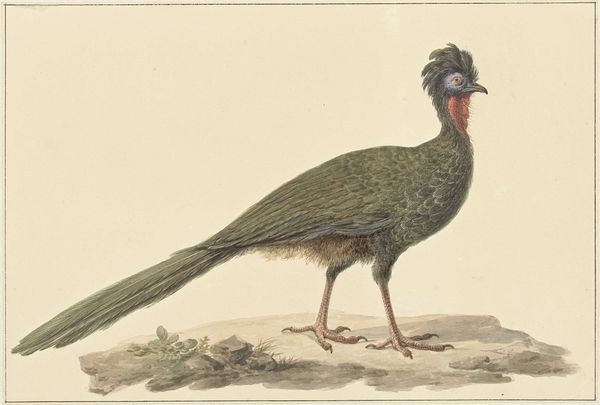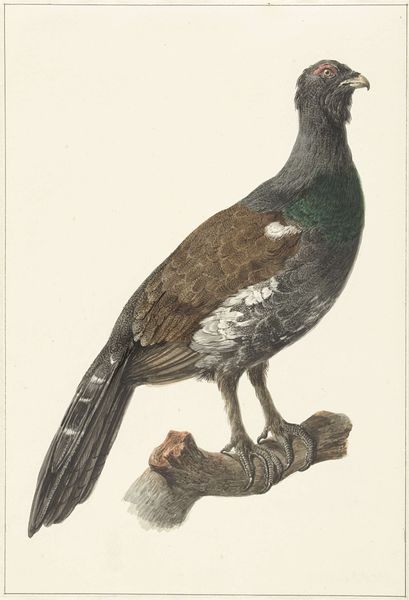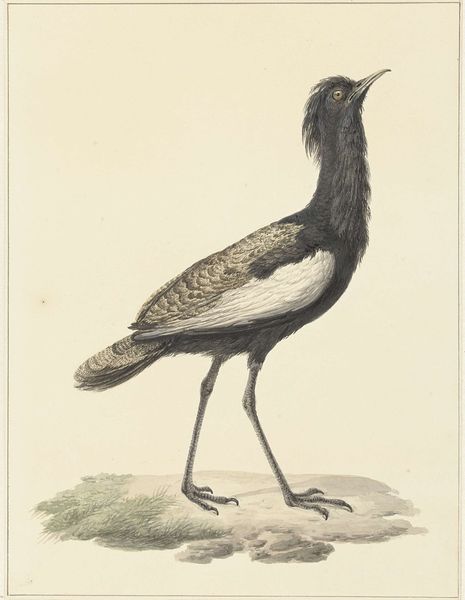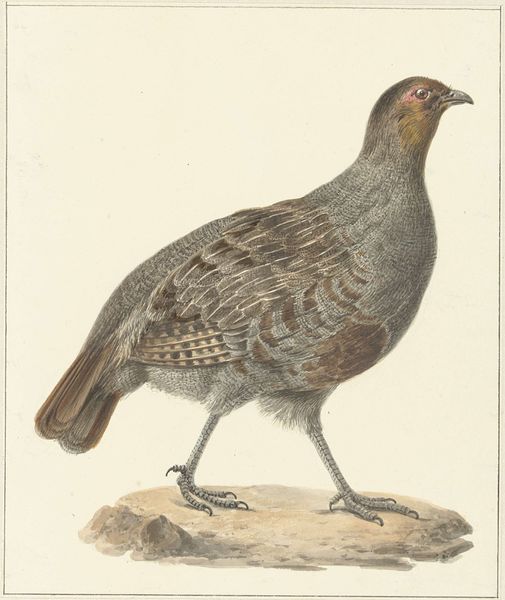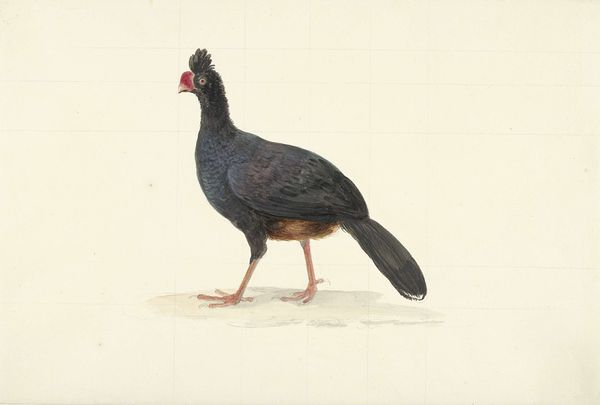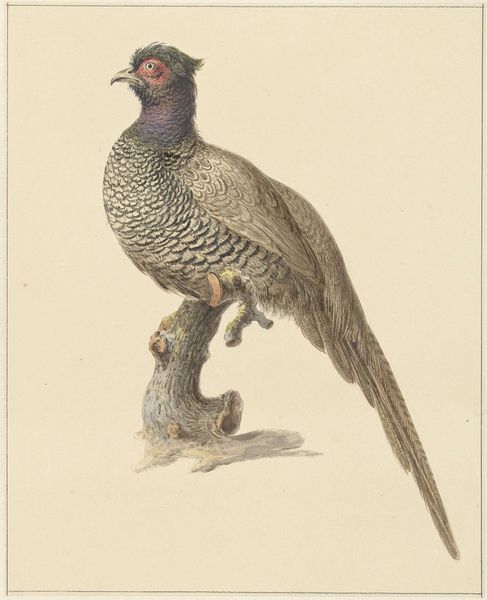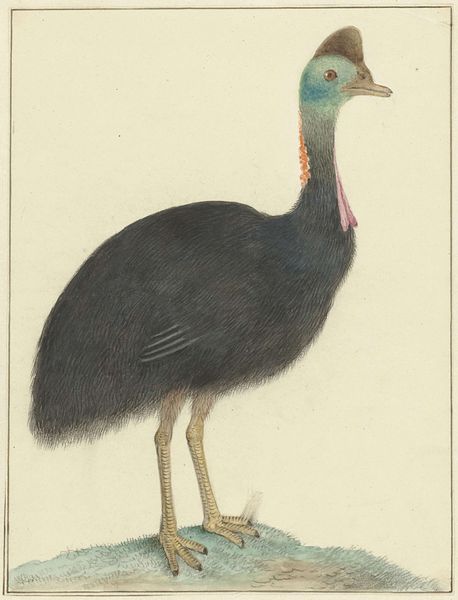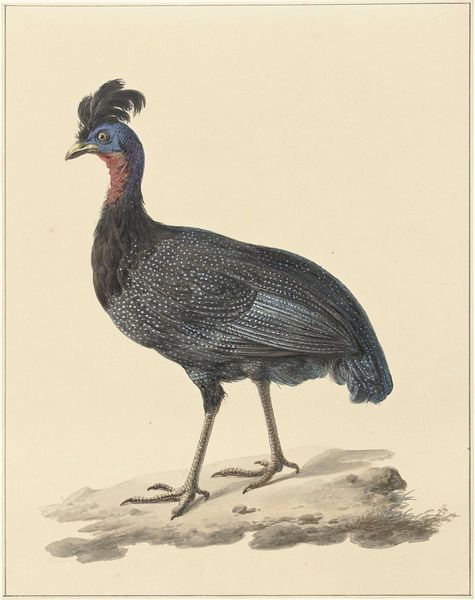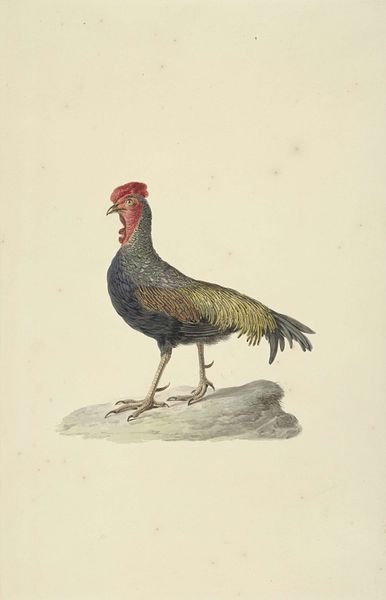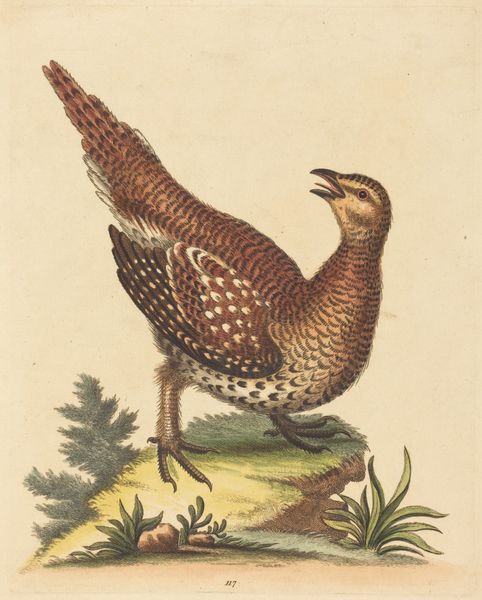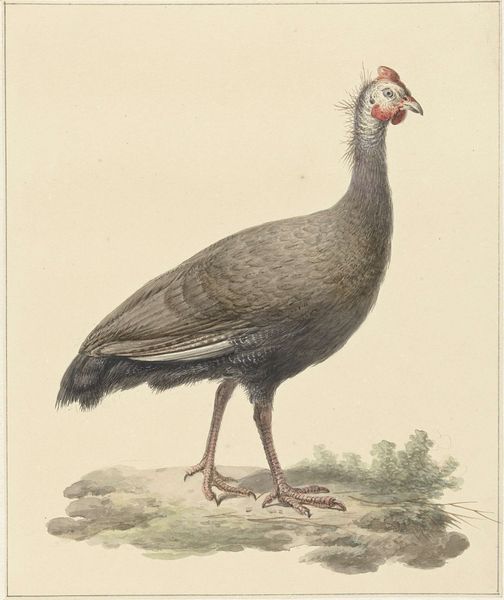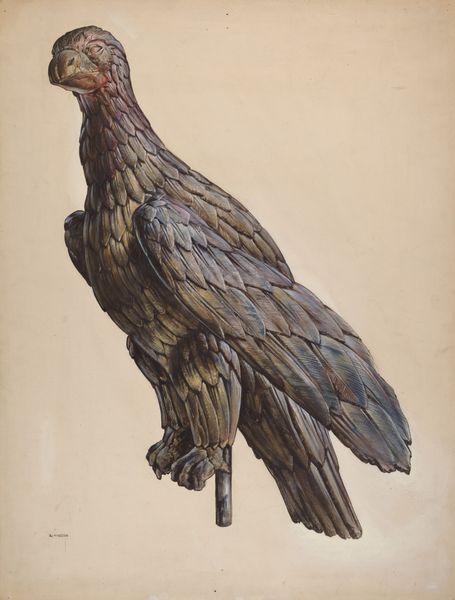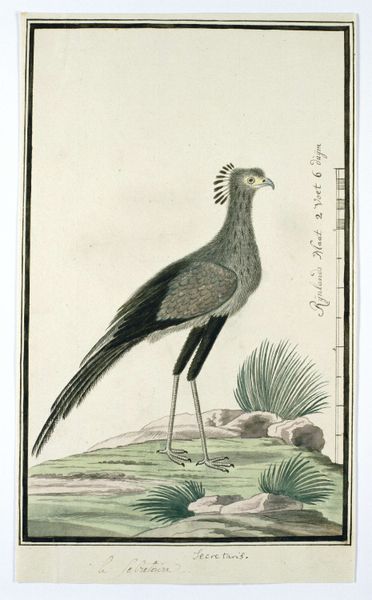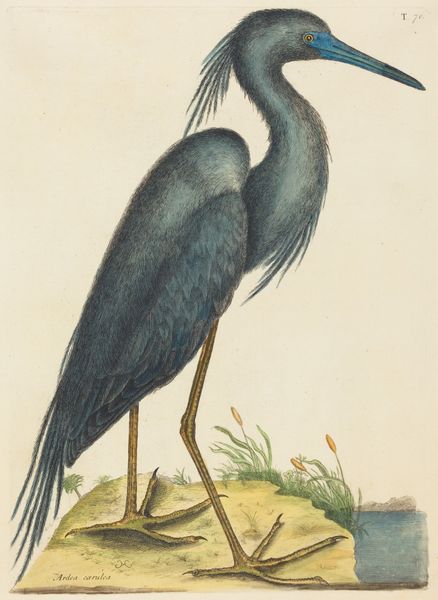
drawing, watercolor
#
drawing
#
botanical illustration
#
figuration
#
watercolor
#
pencil drawing
#
botanical drawing
#
watercolour illustration
#
botanical art
#
realism
Dimensions: height 332 mm, width 267 mm
Copyright: Rijks Museum: Open Domain
Curator: Consider this "Kuifsjakohoen" by Pieter Pietersz. Barbiers, likely made between 1759 and 1842 using pencil and watercolor. What do you make of this rendering? Editor: It's incredibly detailed, especially the texture of the feathers. I’m struck by how meticulously the artist has captured each individual feather, seemingly aiming for scientific accuracy, not just artistic expression. What’s your perspective? Curator: This piece speaks volumes about the materials available and the labor involved. Look at the paper itself – likely handmade, a costly commodity. The watercolour pigments would have been derived from specific minerals or plants, each demanding its own procurement process. We can think about global trade and resource extraction when considering how an artist gains access to their palette. The intense labor speaks to something as well. Why would an artist undertake such meticulous labor? Editor: So you're saying the *making* of the artwork is almost as important as the final product? Curator: Absolutely. This wasn't just about creating a pretty picture of a bird. Think about the economic structures that supported Barbiers, allowing him the time and resources for this detailed work. Who commissioned it? Was it a scientific study, or meant for personal enjoyment? These aspects contextualize the image itself. And did Barbiers collect this bird, did he view it in its natural environment, did he use a taxidermied object as reference, and how do these material processes change the ultimate meaning behind the drawing? Editor: That's a completely different way of looking at art! I usually focus on the aesthetic qualities, the colors, the composition... Curator: Those elements are there, certainly. But consider the social implications of even choosing watercolor as a medium. It's transportable, relatively inexpensive compared to oils – was Barbiers catering to a specific market? The material choices tell a story about the artist's place within a broader economic system. Editor: I see your point. By focusing on materials and process, we get a much richer understanding of the artwork’s cultural context and the artist's position within it. Curator: Precisely! It shifts the focus from individual genius to a network of material exchanges, labour, and consumption.
Comments
No comments
Be the first to comment and join the conversation on the ultimate creative platform.
